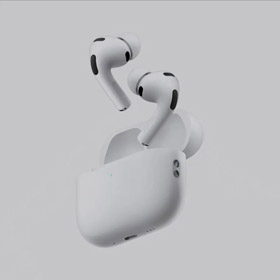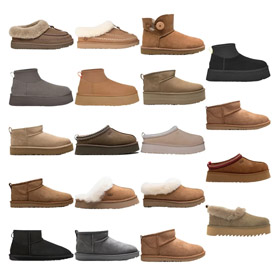Apple Inc.: Redefining Technology as a Lifestyle
2025-04-16
Apple Inc.: Redefining Technology as a Lifestyle
In the pantheon of modern corporate legends, Apple Inc. stands as a paragon of innovation, design excellence, and cultural influence. Since its founding in 1976 by Steve Jobs, Steve Wozniak, and Ronald Wayne in a Silicon Valley garage, Apple has transcended the boundaries of a mere technology company. It has become a global phenomenon that reshaped industries—from personal computing to music, mobile phones, and wearables—by blending cutting-edge engineering with obsessive attention to user experience. More than just a manufacturer of devices, Apple represents a philosophy: that technology should be both powerful and intuitive, a seamless part of daily life that inspires rather than intimidates.
The Genesis of a Revolution: From Garage to Global Giant
Apple's story begins with two visionaries: Steve Jobs, the charismatic marketer with a taste for perfection, and Steve Wozniak, the brilliant engineer. Their first collaboration, the Apple I (1976), was a bare-bones circuit board sold to hobbyists, but it laid the foundation for what would follow. The Apple II (1977), the first personal computer with a colorful display and user-friendly design, brought computing to ordinary consumers, turning Apple into a major player in the nascent PC industry.
The 1984 launch of the Macintosh was a defining moment. Inspired by Xerox PARC's graphical user interface (GUI), the Mac introduced the mouse and icons, making computers accessible to non-technical users. Though initially met with mixed reviews, it set a precedent for Apple's mission: to create technology that bridges the gap between humans and machines. After Jobs' departure in 1985 (following internal conflicts) and a decade of stagnation, his return in 1997 marked the company's rebirth. The iMac (1998), a translucent all-in-one desktop in bold colors, signaled Apple's shift toward design-driven innovation, proving that technology could be both functional and beautiful.
The Design Philosophy: Form and Function as One
Apple's design ethos, shaped by British designer Jony Ive (Chief Design Officer from 1996 to 2019), is rooted in minimalism, simplicity, and "thoughtful omission." Ive once described Apple's approach as "trying to see what's at the essence of things," stripping away unnecessary complexity to reveal elegance in purity. This philosophy is evident in every product: the sleek aluminum unibody of MacBooks, the edge-to-edge screens of iPhones, and the intuitive touch-based interfaces that prioritize user experience over technical specs.
The Language of Materials
Apple has always been a pioneer in material science. The iMac's plastic casings gave way to the aluminum MacBook Pro (2003), showcasing the beauty of industrial-grade metals. The iPhone 4 (2010), with its stainless steel frame and glass back, introduced a new standard for smartphone aesthetics, while the Apple Watch (2015) experimented with ceramic, titanium, and recycled materials. Each material choice is deliberate, balancing durability, aesthetics, and sustainability—a core tenet of Apple's modern design.
User Experience as a Core Value
Apple's obsession with usability is reflected in its software as much as its hardware. The iOS operating system, introduced with the iPhone in 2007, prioritized direct manipulation—touch gestures like swiping, pinching, and tapping became instinctual. The App Store, launched in 2008, created an ecosystem where developers could create intuitive apps, democratizing software innovation. Even complex tasks, like editing videos on an iPad or composing music on a Mac, are made accessible through user-centric design, embodying Jobs' belief that "technology alone is not enough... it's technology married with liberal arts, married with the humanities, that yields the results that make our hearts sing."
Iconic Products That Redefined Industries
Apple's product lineup is a catalog of industry disruptors, each designed to rethink what a category could be:
The iPhone: Reinventing the Phone (2007)
When Jobs introduced the iPhone, he declared it would "revolutionize the mobile phone." Ditching the physical keypad for a multi-touch screen, the iPhone merged a phone, music player, and internet device into one. The App Store, combined with iOS's fluid interface, created a platform that spawned entire industries (ride-hailing, food delivery, social media) and made smartphones indispensable. By 2023, over 2.2 billion iPhones had been sold, cementing it as the most successful consumer electronics device in history.
The iPad: Creating a New Medium (2010)
Critics dismissed the iPad as a "big iPhone" until it became clear that it occupied a unique space between laptops and smartphones. With apps like Procreate for artists, Microsoft Office for professionals, and endless educational tools, the iPad redefined mobile productivity and entertainment. The introduction of the iPad Pro (2015) with the Apple Pencil and Magic Keyboard further blurred the lines between tablet and computer, proving that form factors could evolve beyond traditional definitions.
The Apple Ecosystem: Seamless Integration
What sets Apple apart is not just its individual products, but how they work together. The "Apple Ecosystem"—comprising iPhones, iPads, Macs, Apple Watches, AirPods, and services like iCloud, Apple Music, and Fitness+—creates a unified experience. A user can answer a call on their Watch, continue editing a document on their iPad, and stream music to their HomePod, all synced effortlessly through iCloud. This integration isn't just convenient; it's a strategic moat that keeps users loyal, as switching to another ecosystem would mean leaving behind years of data and seamless interactions.
Innovation Beyond Hardware: The Services Revolution
In recent years, Apple has expanded beyond hardware into services, recognizing that customer loyalty thrives on ongoing engagement. The App Store, now a $1.2 trillion marketplace, hosts over 1.9 million apps, generating billions in revenue for developers. Apple Music (2015) competes with Spotify by emphasizing curation and exclusive content, while Apple TV+ (2019) offers original programming from A-list creators, positioning Apple as a media player.
The "Apple Fitness+" and "Apple Card" further extend the brand into health and finance, leveraging the iPhone and Watch's data-gathering capabilities. These services not only diversify Apple's revenue (Services segment revenue hit $78 billion in 2023) but also deepen user immersion in the ecosystem. As Tim Cook, Apple's CEO since 2011, has emphasized, "We don't make products to make money; we make money to make great products." Services enable Apple to invest in long-term innovation while fostering a sticky relationship with users.
Culture, Controversy, and Corporate Responsibility
Apple's journey has been as much about culture as commerce. Steve Jobs' perfectionism and "reality distortion field" pushed teams to create products that seemed impossible, but also drew criticism for workplace practices and secrecy. Under Tim Cook, the company has taken a more public stance on social issues, becoming a leader in environmental sustainability and privacy.
Environmental Stewardship
Apple has set ambitious goals: by 2030, every product will be carbon neutral, and all packaging will use recycled or renewable materials. The company now sources 100% of its electricity from renewable energy for global facilities and has pioneered recycling technologies like Daisy, a robot that disassembles iPhones to recover rare earth metals. In 2023, 90% of the aluminum in Apple Watch cases was recycled, reflecting a shift from resource extraction to circular economy principles.
Privacy as a Core Value
In an era of data exploitation, Apple has positioned privacy as a fundamental user right. Features like App Tracking Transparency (which lets users block apps from tracking their activity) and 端到端加密 for iMessage and FaceTime have made it a champion of digital civil liberties. Tim Cook has stated, "Privacy to us is a human right, a civil liberty," a stance that resonates with consumers increasingly concerned about their digital footprints.
The Future: Balancing Legacy and Innovation
As Apple enters its fifth decade, it faces new challenges: saturating smartphone markets, regulatory scrutiny (e.g., antitrust lawsuits over the App Store), and the need to innovate in emerging fields like augmented reality (with the Vision Pro headset, 2023) and artificial intelligence. Yet its core strengths remain: a fanatical focus on design, a loyal ecosystem, and a brand that symbolizes both aspiration and accessibility.
Apple's story is a testament to the power of combining technology with humanistic values. It didn't just create products; it created a vision of how technology should integrate into our lives—elegantly, intuitively, and seamlessly. In a world where gadgets often feel disposable, Apple reminds us that the best technology is not just about what it can do, but how it makes us feel: empowered, connected, and inspired.
For more insights into innovative brands and the intersection of technology and culture, visit https://yesfinds.net/.



















